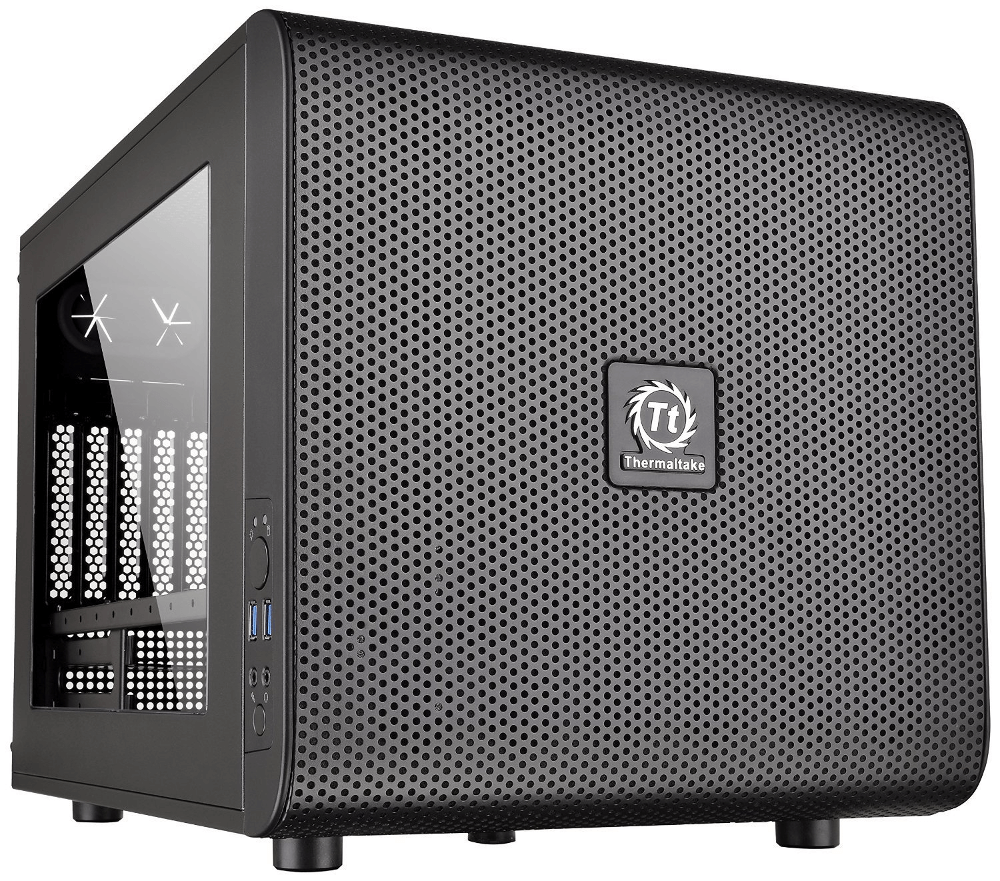What to keep in mind when you’re buying a case for your computer
If you’re building a PC, the case for that computer is an important part of the process. It’s part of what decides what kinds of ports you’ll have, and it’s what people see when they look at your computer, so its design might be important for you.
Unfortunately, it can often be hard to know exactly what to look for when you’re buying a new case for your computer. That’s why we’ve put together this list of things to have on your list when you’re looking for a new computer case.
Size and shape
The first thing to consider when you’re buying a computer case is the case’s size and shape. Unlike things like the processor, the case size isn’t necessarily a big deal, however there are a few things to keep in mind nonetheless. For example, larger cases can generally hold more hard drives and have room for larger video cards.
Generally, there are two computer case interiors to consider — ATX, which measures 12 x 9.6-inches, and microATX, which sits at 9.6 x 9.6-inches. If you get a microATX motherboard, it will most likely work with the ATX form factor, but the other way around is not true. In any case, if you make sure your motherboard and case match up, you can’t go wrong.
Drive bays
The second thing you’ll want to take a look at is how many drive bays your computer case has. Generally, the larger the computer case is, the more drive bays it will have available. There are a total of three drive bay sizes that you’ll need to consider. The first is the 5.25-inch bay, which is used most often for optical drives like a DVD drive or a Blu-Ray drive.
The second drive bay is the 3.5-inch bay, which can be either internal or external. The internal variety are most often used for hard drives (whether they be hard disk drives or solid state drives), while the external kind are, at least these days, used for card readers.
Last but not least is the 2.5-inch bay, which isn’t very common but is gaining steam. These are used for smaller hard drivers, as well as some solid state drives. Most of these bays are internal, however every now and then you’ll see a case with an external hard drive.
Expansion slots
The next thing to keep in mind is how many expansion slots you need. The larger ATX cases generally have up to seven expansion slots; however, the smaller microATX cases have four.
Expansion slots can be used for a range of different things, from PCI cards to video cards, to sound cards, and so on.
The power supply
This is a major point you’ll want to keep in mind — whether or not your case has a built in power supply. Of course, it’s something you’ll want to think long and hard about. Cheaper cases that come with power supplies are generally lower quality, and those power supplies will need to be replaced sooner. If you want to ensure quality, you might want to buy a more expensive case/power supply combo or buy them separately.
The front panel
 These days, it can be important — and convenient — to make sure there are enough front-facing ports on your computer. More and more peripherals are being purchased, and it can make a big difference to be able to plug them in quickly and easily. For example, you might want to be able to plug things in like headphones, USB-connected peripherals, and in some cases microphones too.
These days, it can be important — and convenient — to make sure there are enough front-facing ports on your computer. More and more peripherals are being purchased, and it can make a big difference to be able to plug them in quickly and easily. For example, you might want to be able to plug things in like headphones, USB-connected peripherals, and in some cases microphones too.
Computer cooling
The last but not least thing to keep in mind when selecting a computer case is how well — or not well — it can cool the components inside the case. For example, you’ll want to consider how many fans the case comes with out of the box and whether or not you can add more fans down the road. Most cases have an exhaust fan on the back, as well as intake fans on the front, but apart from that you might need to add some fans of your own, especially if you have a more powerful system in mind.
When buying fans, you may want to consider buying one or two larger ones than a lot of smaller ones — smaller fans tend to be a lot louder than their larger counterparts.
Conclusions
Whether you need a computer case for a high-powered gaming PC, or you’re just interested in building your own computer for the day-to-day, there are plenty of case options for you.

















